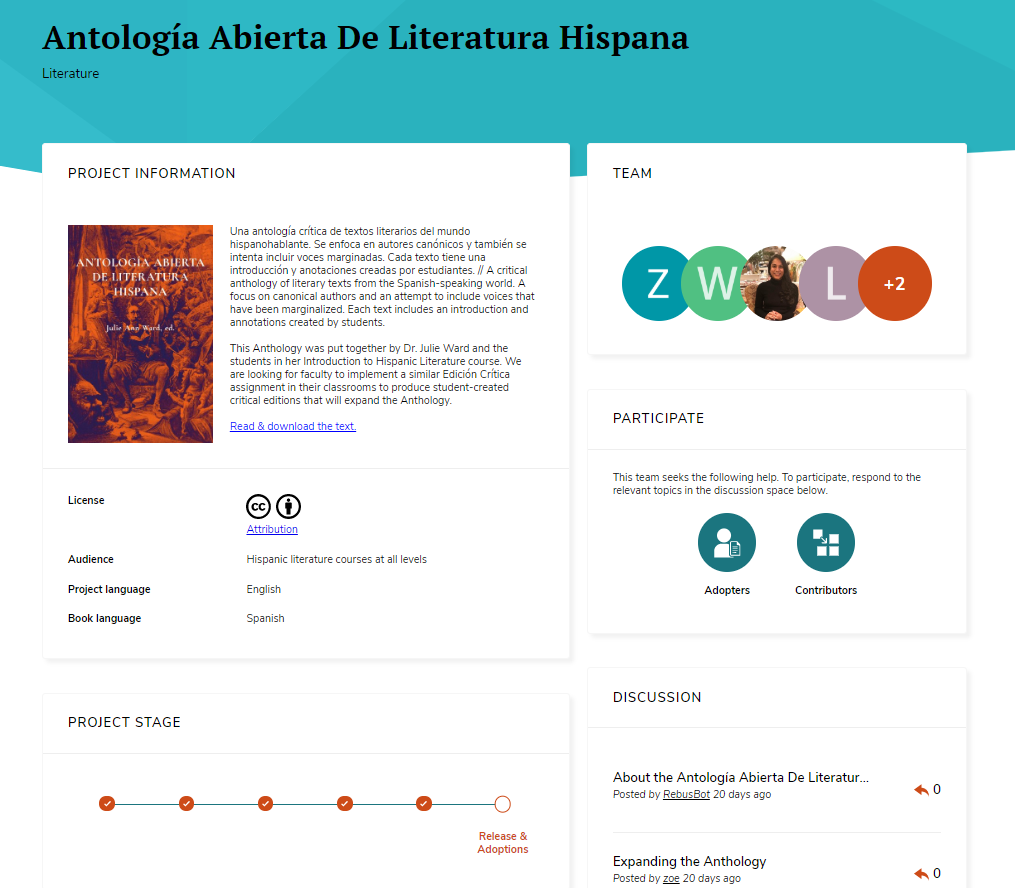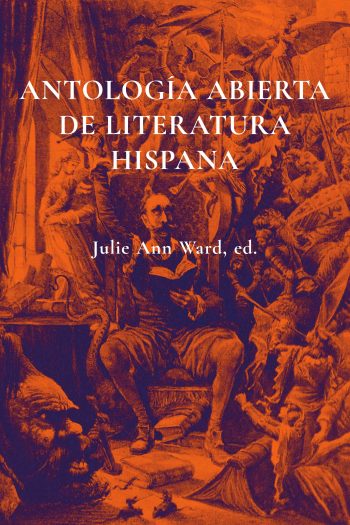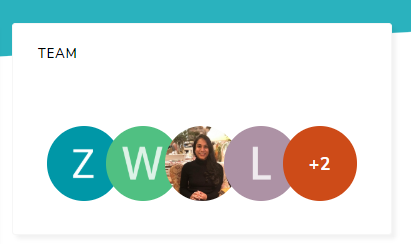This is the third in a series of reports filed by Donna Langille, a practicum student who joined us for the spring of 2019. We’ll be releasing each chapter as a blog post weekly. Find the complete text at Rebus Community Reports.
Antología abierta de literatura hispana is an anthology of Spanish literary texts edited by Julie Ann Ward. It was released in the summer of 2017.

WHEN MAKING OER MAKES E MORE O
Julie Ward Engages students in creating Antología Abierta de Literatura Hispana
Thanks to the relative ease of updating and revising an open textbook, they make excellent tools for classroom use. This is not just because they stay relevant when the course subject is one that evolves rapidly, but because making those updates and revisions can be a powerful way for students to learn through doing.
Julie Ward, an assistant professor of Spanish and Latin American literature at the University of Oklahoma (OU), has leveraged just that value. One of the assignments for her third-year students is to create a critical edition of a Hispanic literary text. Each year, they learn about literature and literary critique by engaging in the process directly, and each year the Antología abierta de literatura hispana grows as these contributions are compiled. It is a clear example of how making OER is a way to make education itself more open. Moreover, as other professors use the Antología in their own classrooms, it has become a stellar illustration of how open textbooks can grow beyond the boundaries in which they were originally imagined.
The motivation to create this textbook first arose when OU launched a set of alternative textbook grants to encourage faculty members to assign open educational resources. While the university’s intention was to save students money, the funding was just the catalyst that Julie needed. She didn’t much like the current textbook that she was using—it was expensive, overused, and too much to get through in a single semester. And because most of the texts in it were already in the public domain, Julie realized that it was time to create her own OER.
Despite the forward momentum Julie felt, her decision to create an open textbook was met with resistance. Her colleagues warned her that it would not count towards her tenure dossier, a legitimate enough concern, given that it might mean doing the work on her own time. When institutions do not recognize open projects as tenure-worthy, there’s no support for making time or space within a faculty member’s already overloaded work schedule. Although she listened to what was said, Julie never let it concern her unduly. When she then came across Robin DeRosa’s Anthology of American Literature, it clinched the deal, and she realized that it was exactly what she wanted to do.
The opportunity for students to contribute to the textbook ultimately reinforced her decision. She was confident that it would make her students’ in-class experience better. Direct experience conducting literary research and going through the editing and publishing process would allow her students to learn in a way that was innovative and, she hoped, more satisfying. Julie sensed that it would also make her own life easier, as well as support her research. There were plenty of reasons to move forward.
One challenge with assigning a team-based project, however, is students’ varying schedules. Julie therefore divided her students into working groups based on their shared availability. Within these groups, they had to choose a text from a list that Julie provided—a measure of control that she retained in order to ensure diversity within the book. This was also driven by her desire to change the canon. She has been very careful to include a lot of authors who are women on the list, which has been a bit difficult since all the texts have to be in the public domain. There just weren’t as many women being published in the past, and their work isn’t being digitized as much.
Once the students have selected their text, they have to prepare the critical material around it for inclusion in the Antología. This includes writing an introduction covering the biographical background of the author, information about the literary and sociopolitical context during the time when the author was writing, an image that is relevant to the text, and at least ten footnotes. The footnotes need to include at least one of the following: a definition, supplementary contextual information, explanatory details, and literary analysis. The students must also write up a bibliography and a set of discussion questions. Julie then asks them to review and workshop each other’s drafts at different moments in the semester. At the end of the course, the groups share their work as an oral presentation, and each student writes an individual paper on their own interpretation of the same text.

Once a first edition of the book had been released, Julie assigned it as the textbook in her subsequent classes. This has reaffirmed the original notion that doing the work themselves would be a good experience for students, but that it would also be valuable for Julie herself. Importantly, she has learned to trust that her students are more than capable of creating content from which other people can learn. Gratifyingly, the textbook (both as process and product) seems to have affected her students’ classroom experience: since implementing it, Julie has seen fewer students dropping her course. Students have the readings at the beginning of the semester, which lets Julie focus on key teachings right from the start. This also helps her build stronger relationships in class and maintain student attention and trust.
Initially, Julie was anxious that if students were focused on just one text, it might mean that they weren’t having a comprehensive enough experience with literary research and critique. Moreover, since it was an introductory survey course, she wasn’t confident about students’ capacity to do what she was asking of them. These feelings rapidly subsided after the first semester. At the end of the course, she organized a poster session in which each student presented the work they had done their text. The university’s librarians were invited to the session as well, given that the project had been funded by the library. One of the highlights from the session was seeing the students speak so authoritatively and confidently about their work, from the author’s background to the literary movement at the time to the text itself.

The support team helping Julie and her students create this textbook has been instrumental. Jen Waller, OU’s director of open initiatives and scholarly communication, has helped by giving presentations and workshops to Julie’s students about how to cite properly and how to license their own work, including the use of Creative Commons licenses. It has been a crucial part of the process. The Rebus Community platform and Pressbooks have also had a significant role, enabling students to upload their assignments directly into Pressbooks without formal guidance. And through Rebus’s wide community of connections, Julie has benefited from contact with others working on similar projects, as well as the invaluable contributions of a native Spanish speaker who has done the copyediting. Moving forward, Julie will be securing the help of a graduate student research assistant, who will edit future student submissions.
Since the textbook is continually growing, the work tends to pile up, particularly because of the need for constant updates. To make these updates, Julie draws on the enthusiasm she herself gains from the collaborative energy within the community that creates open textbooks. While the work is indeed immense, that momentum continually refreshes her.
Self-sustaining energy seems to be a fundamental characteristic of work on open textbooks. Research readily demonstrates the positive impact that OER has on students, and that can spur teachers to build openness into the rest of the work they do. Over time, broader and broader connections feed back the positive words that open textbook teams so need, and this in turn gives value to OER adopters and users. Somewhere in there, organizations like Rebus help out, facilitating connections and supplying infrastructure. In the end, the outcomes benefit everyone in the ecology.
What was critical in the case of the Antología abierta de literatura hispana was that Julie remembered to rely on and trust her students. By creating the opportunity for them to feel empowered in the classroom, everyone benefited. As Julie recalls the warnings about starting up an open textbook project—and doing it with student contributions, no less!—she also remembers thinking to herself, Why not? The numerous professors throughout the United States who have adopted this book are the answer to that question, and testimony to what happens when you have confidence in OER and opening up possibilities for student learning.

Images from the new Rebus Community project homepage have been included in this post. To view the complete project homepage for Antología Abierta de Literatura Hispana. Create a project homepage for your open textbook in development by going to Rebus.Community and clicking “Create a Project.”
